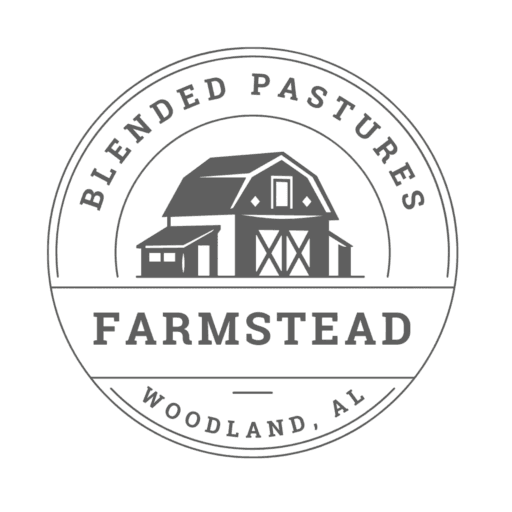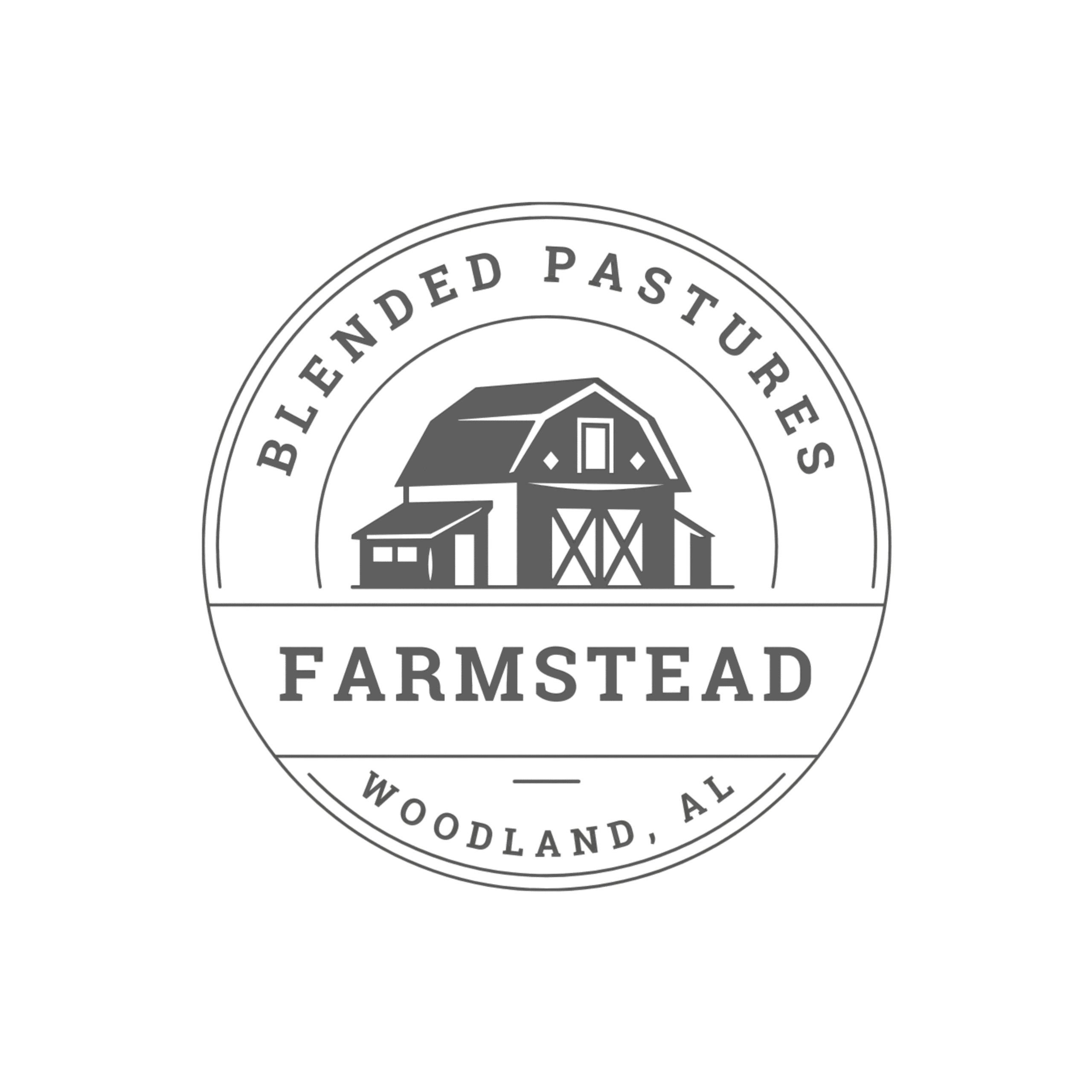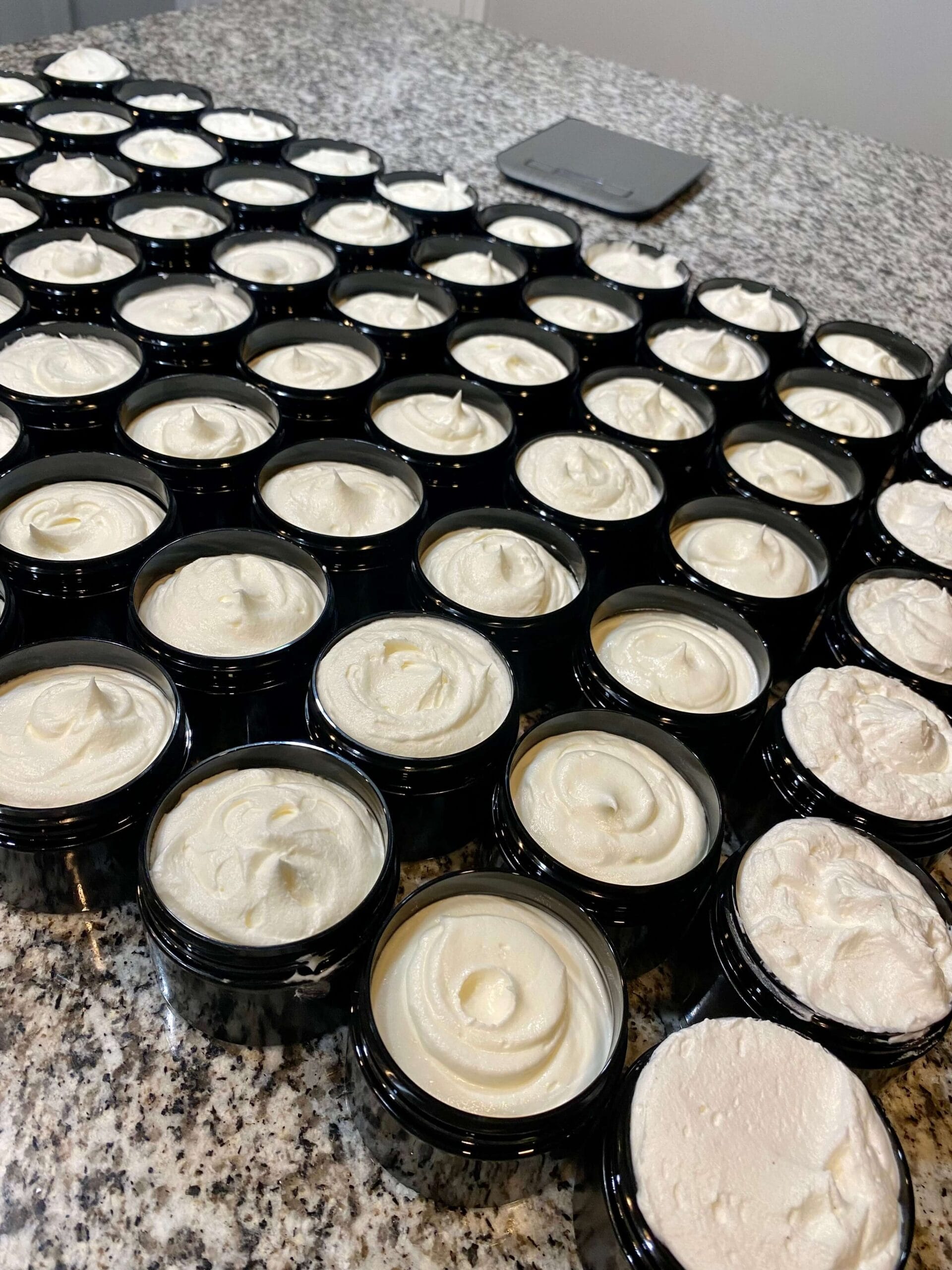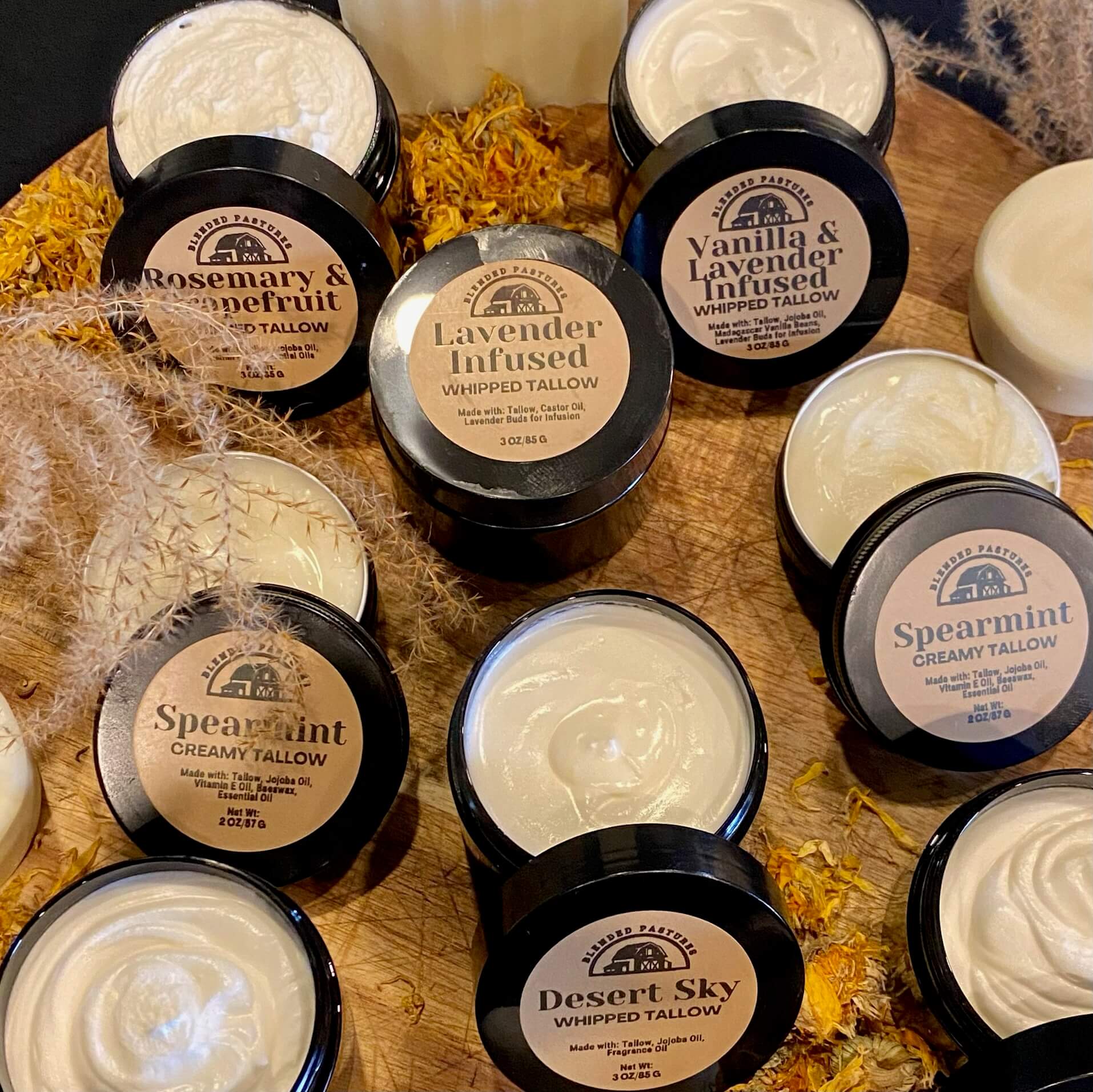I used to think tallow in skincare was just another trendy gimmick, but the science behind it is seriously impressive! This traditional ingredient – used by everyone from Cleopatra to Native Americans – actually mirrors our skin’s natural oils and packs essential vitamins A, D, E, and K. When sourced from grass-fed cattle, tallow delivers deep hydration without clogging pores. Let me show you why this ancient beauty secret deserves a spot in your modern routine.
Highlights
- Tallow’s molecular structure closely matches human skin oils, making it highly compatible and effective for skincare applications.
- Scientific evidence shows tallow has a low comedogenic rating of 2/5, meaning it rarely clogs pores or causes breakouts.
- High-quality tallow contains natural vitamins A, D, E, and K that support skin health and barrier function.
- Historical use across multiple civilizations proves tallow’s long-standing effectiveness as a natural skincare ingredient.
- Premium tallow from grass-fed cattle provides superior skincare benefits while supporting sustainable and ethical farming practices.
The Historical Significance of Tallow in Beauty Rituals
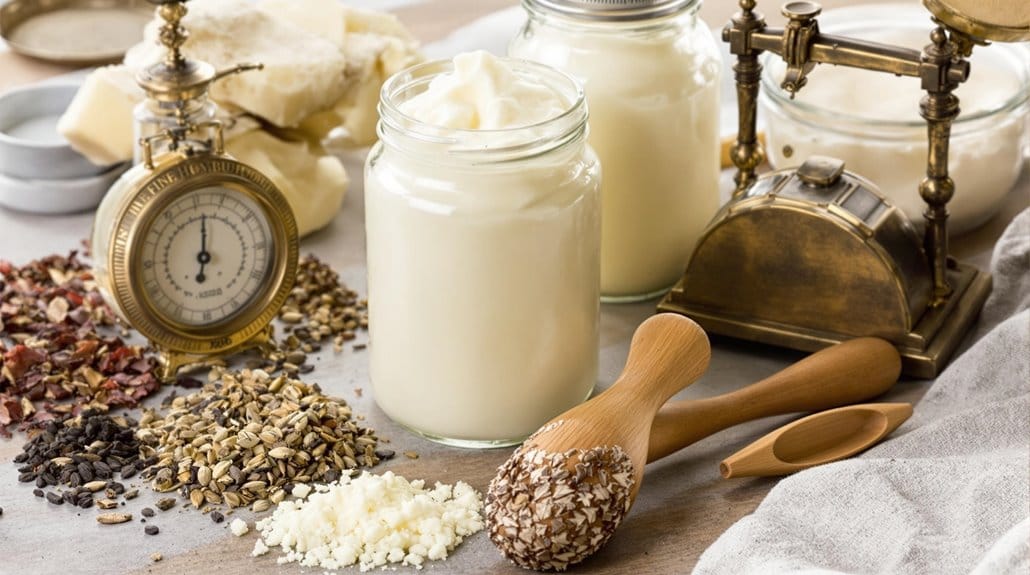
You might think tallow is just another trendy skincare ingredient, but let me tell you – this powerhouse has been around since ancient times! When I first learned about its historical significance, I was blown away by how many civilizations trusted this natural wonder.
I mean, if it was good enough for Cleopatra’s beauty routine, it’s definitely worth our attention! The ancient Egyptians weren’t alone – Native Americans and Romans also knew what they were doing when they incorporated tallow into their skincare rituals. Talk about standing the test of time!
What fascinates me most is how this ancestral wisdom has proven itself right (as usual). These civilizations didn’t have fancy labs, yet they discovered tallow’s amazing moisturizing properties through generations of practical experience. Isn’t it incredible how nature provides exactly what we need?
Medieval herbalists regularly prescribed tallow-based treatments to help heal inflammatory skin conditions.
Understanding Tallow’s Molecular Structure and Skin Benefits
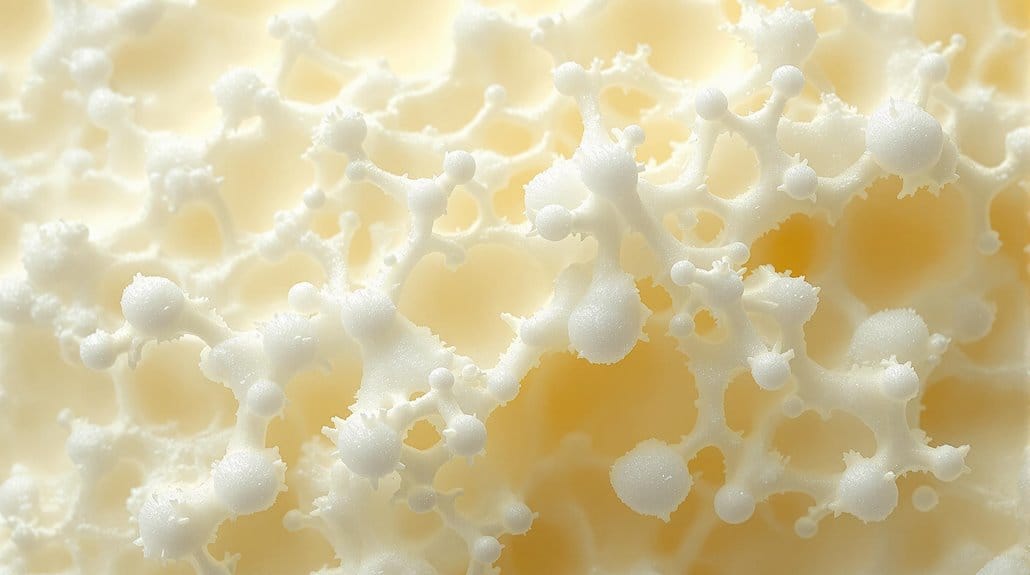
While skincare science can get pretty complicated (trust me, I’ve fallen down that research rabbit hole!), tallow’s molecular structure is fascinatingly simple – it’s practically a twin to our skin’s natural oils!
Let me break down why this is so exciting: tallow contains the same fatty acids – oleic and stearic acids – that make up our skin’s natural lipids. It’s like they’re speaking the same language! Plus, tallow comes packed with vitamins A, D, E, and K (nature’s little skincare powerhouses). I’ve found that the benefits of tallow are pretty remarkable – it hydrates without clogging pores, repairs your skin barrier, and even fights inflammation thanks to its CLA content. And here’s the best part: when it’s properly processed, it’s stable and almost scentless!
The whipped texture of modern tallow products makes them especially easy to apply while maintaining all their nourishing properties.
The Science Behind Tallow’s Non-Comedogenic Properties
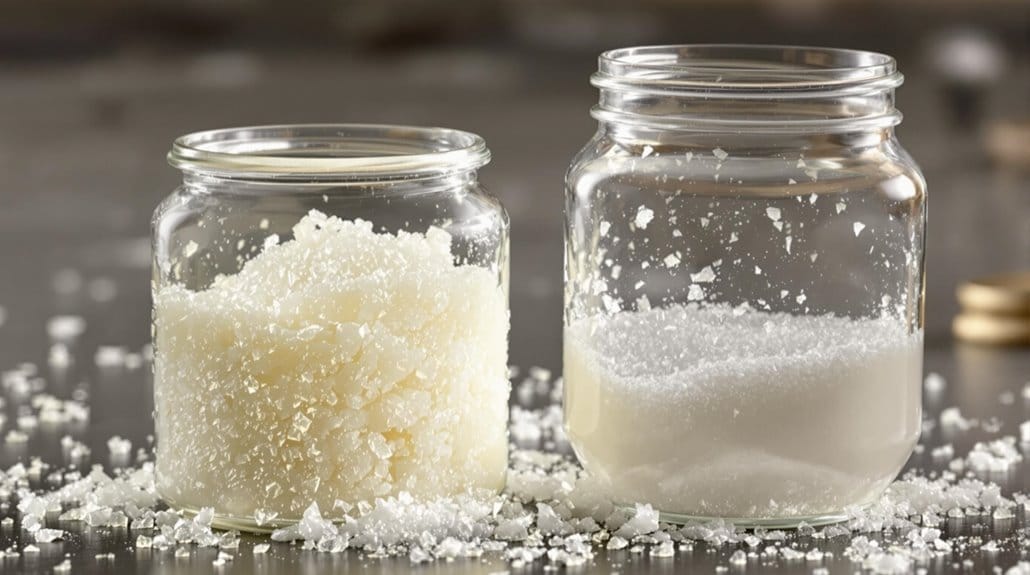
Speaking of tallow’s amazing molecular match with our skin, let’s tackle one of the biggest concerns I hear from my readers – “Won’t this stuff clog my pores?!” The science actually shows the opposite!
With a low comedogenic rating of just 2 out of 5, tallow is surprisingly gentle on your pores. I love explaining to skeptics (I used to be one!) how tallow’s unique fatty acid structure mirrors our skin’s natural oils – it’s like they’re long-lost twins! Even better, those fat-soluble vitamins A, D, E, and K in high-quality tallow contribute to skin health without causing breakouts. The refined stuff is especially pure, with potential pore-clogging impurities removed. While everyone’s skin is different (trust me, I know), most people find tallow actually improves their skin’s texture and hydration!
Modern whipped tallow formulas deliver deep moisturization while maintaining a lightweight, easily absorbed texture that won’t overwhelm your skin.
Sourcing and Quality: What Makes Premium Tallow Different
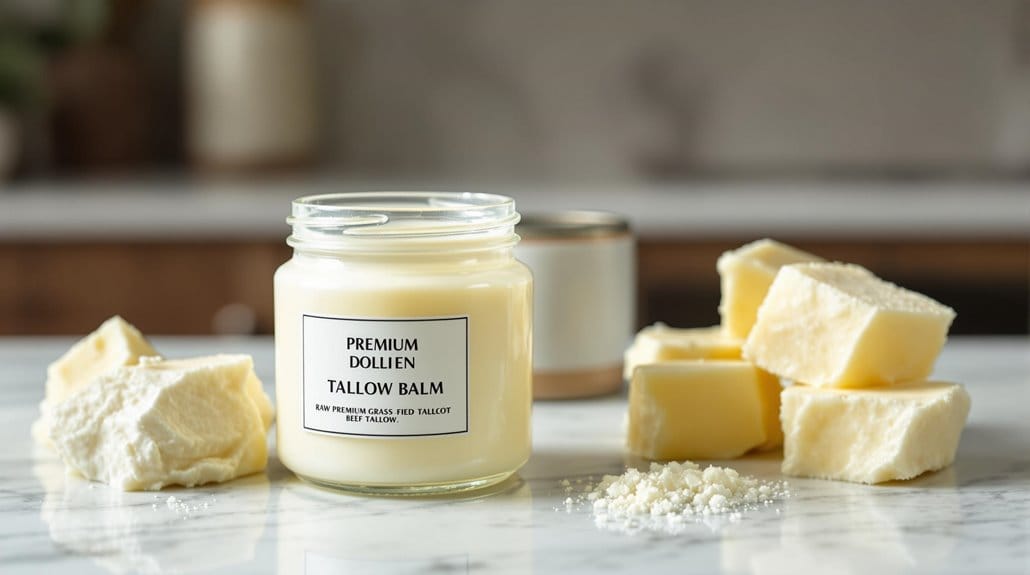
Just as premium coffee beans make a world of difference in your morning brew, the source and quality of tallow can make or break your skincare routine! I’ve learned that premium tallow from grass-fed cattle isn’t just a fancy marketing term – it’s a game-changer for your skin (trust me, I’ve tried both kinds!).
When sourcing tallow for skincare, quality matters more than you might think. The good stuff comes from grass-finished cattle and gets refined in GMP-certified facilities – no questionable ingredients here! What’s really cool is how premium tallow’s fat composition mirrors our skin’s natural lipids. Plus, when you choose high-quality tallow products, you’re supporting ethical farming practices that prioritize animal welfare and regenerative agriculture. It’s a win-win for your skin and the environment!
The whipped formula texture provides superior absorption while nourishing and softening the skin for a natural, healthy glow.
Sustainability and Ethical Considerations in Tallow Production
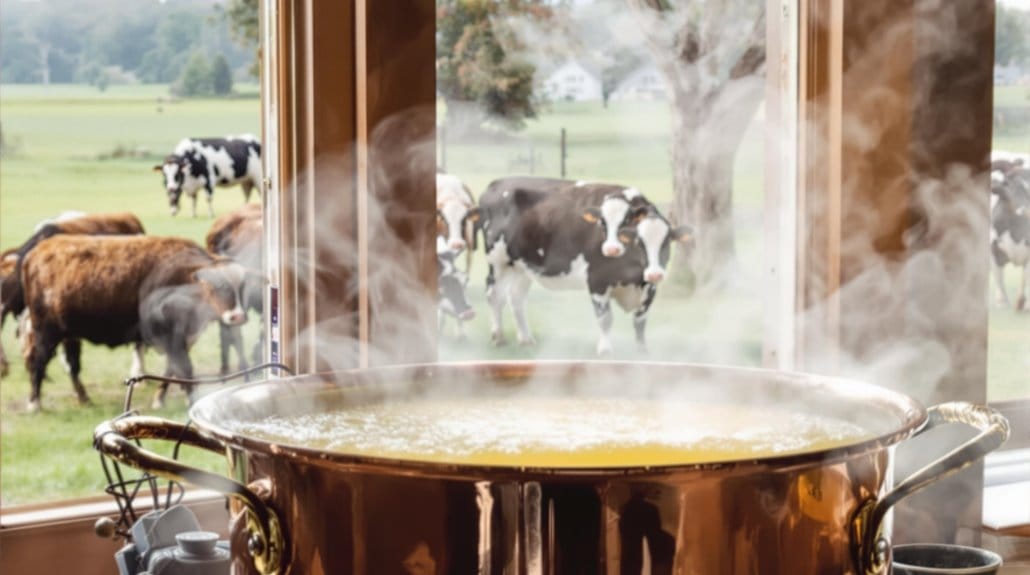
The beauty of tallow skincare extends far beyond its amazing benefits for your skin! When you choose tallow products, you’re actually supporting ethical farming practices that put animal welfare first (who knew skincare could be so meaningful?). I’m especially excited about how grass-fed tallow supports regenerative agriculture – it’s like giving Mother Earth a high-five!
Here’s what I love most: using tallow means we’re utilizing the whole animal, which reduces waste and environmental impact. Plus, when we create demand for sustainably sourced tallow, we’re helping farmers earn better prices for doing things the right way. The cherry on top? Tallow products have an incredible shelf life, so you’ll need fewer preservatives in your skincare routine. Talk about a win-win for both your skin and our planet!
Common Misconceptions About Animal-Based Skincare
While many of us have heard wild myths about animal-based skincare products, I’m here to bust those misconceptions wide open! Let’s tackle one of the biggest myths I keep hearing – that tallow-based products automatically clog pores. Trust me, that’s far from the truth!
You might be surprised to learn that high-quality tallow actually mimics our skin’s natural oils (I know, mind-blowing right?). And here’s another shocker – it’s not just for dry, aging skin! I’ve seen incredible results across all skin types, even oily and acne-prone complexions. Those common misconceptions about tallow having an offensive smell? Pure nonsense! When properly rendered, tallow is practically odorless. Plus, it’s actually one of the most eco-friendly skincare ingredients out there – who knew that traditional wisdom could be so environmentally friendly?
Modern Applications and Clinical Evidence
Before jumping on the tallow-trend bandwagon, I’ve got to share some fascinating insights about what modern science actually tells us! While I’m seeing countless TikTokers rave about tallow’s modern applications in skincare formulations (and trust me, I’ve watched hours of these videos!), the clinical evidence isn’t quite as robust as we’d hope.
Here’s the thing – while tallow’s structure mirrors our skin’s natural lipids (pretty cool, right?), the research is still in its early stages. I’ll be honest: dermatologists are scratching their heads about the conflicting study results. Sure, many users swear by its benefits, but without solid scientific backing, I’m taking these claims with a grain of salt. That’s why I always tell my friends to patch test first – your skin might love it or hate it!
Best Practices for Incorporating Tallow Into Your Routine
Ready to plunge into tallow skincare but not sure where to start? I’ve got you covered with some foolproof tips to make the most of this amazing ingredient (trust me, I was skeptical at first too!).
Let’s start with the golden rule – patch testing! I always recommend dabbing a tiny bit of tallow on your inner arm before going all-in. Once you’ve confirmed it plays nice with your skin, apply it to clean, dry skin for maximum moisturizing properties. I love mixing mine with a drop of lavender oil for extra pampering!
Frequently Asked Questions
Why Do Dermatologists Not Like Beef Tallow?
Holy cow – the tallow misconceptions are real! I’ve learned that dermatologist opinions on animal fat skincare aren’t super positive, and here’s why: there’s little clinical research backing tallow’s safety, it’s unregulated by the FDA (yikes!), and it might trigger allergic reactions. As someone who follows skin science, I understand their concerns about contamination risks and how this heavy ingredient could worsen acne-prone skin!
What Are the Negative Effects of Tallow on Skin?
I’ve seen firsthand how tallow can cause some nasty skin reactions – and let me tell you, they’re not fun! The big concerns I always warn about include unexpected tallow allergies (yep, they’re real!), skin irritation that can leave you red and itchy, and serious pore clogging. Since it’s not FDA-regulated, I’m extra cautious about contamination risks and those pesky acne breakouts that some people experience.
Is Tallow Actually Good for Your Skin?
I’ve discovered that tallow’s benefits for skin are actually incredible! As a natural moisturizer, it matches our skin’s structure so well that it’s like giving your face exactly what it needs. I love how it locks in hydration without feeling greasy (trust me, I was skeptical too). Plus, with all those vitamins and antioxidants, your skin gets nourished while staying protected – it’s basically like a cozy, healing blanket for your face!
Why Did We Stop Using Tallow?
You know, I’ve noticed that tallow’s history in skincare took a major nosedive when synthetic ingredients burst onto the scene (thank you, mid-20th century!). Cultural perceptions shifted as people started viewing animal fats as “old-fashioned,” while modern alternatives – especially petroleum-based products – offered cheaper, more standardized options. Between changing beauty standards, animal welfare concerns, and the appeal of lighter formulations, tallow just couldn’t compete with sleek new products anymore!
